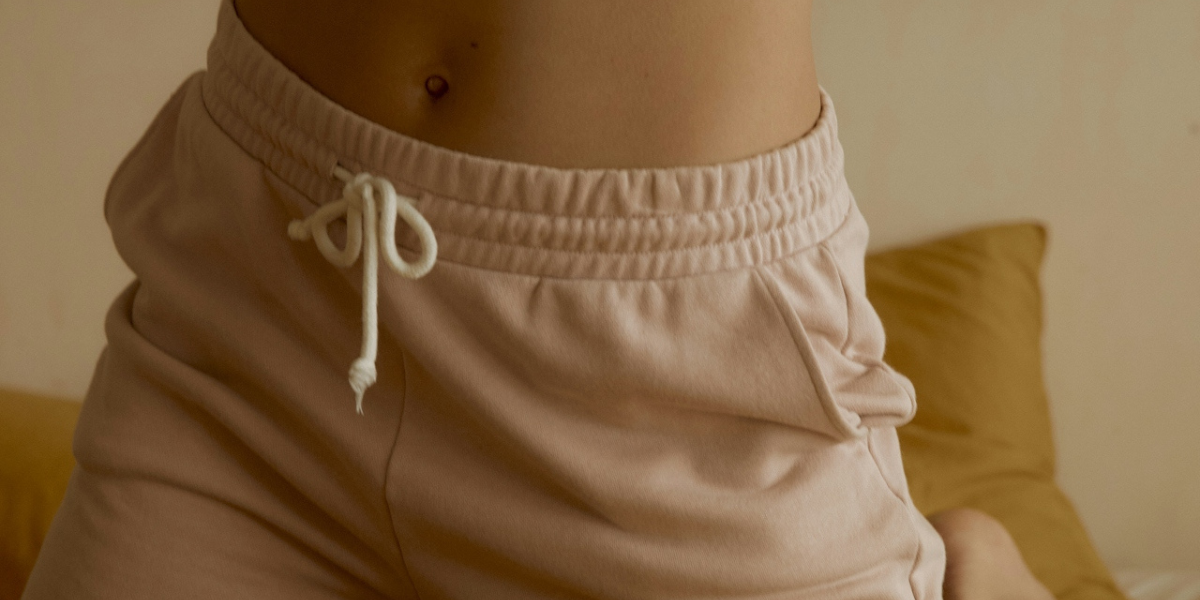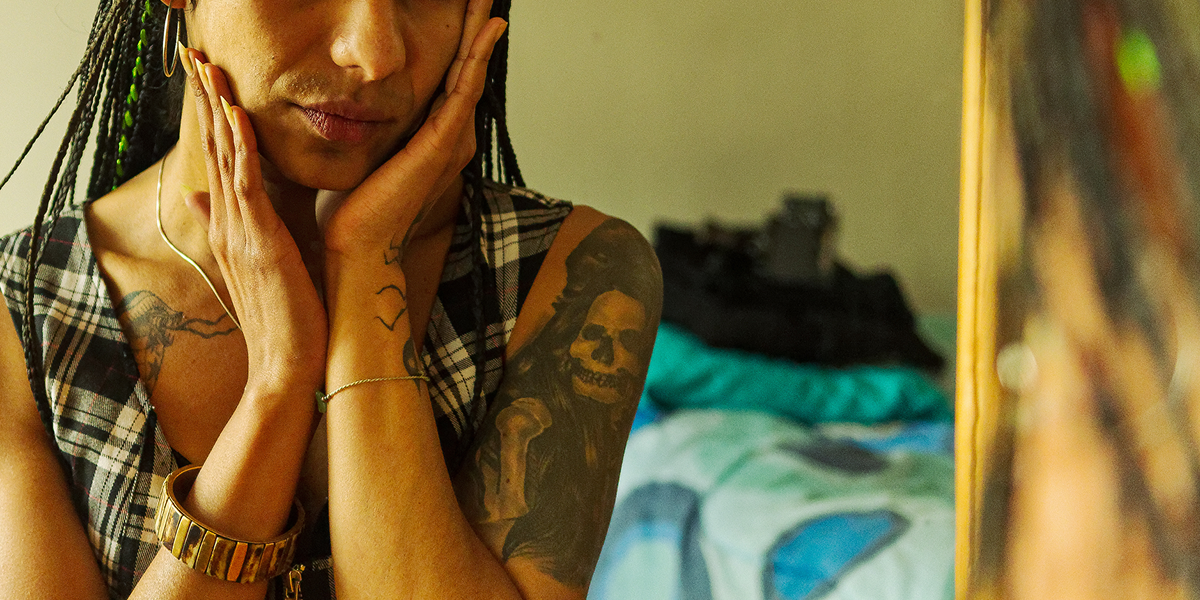When my girlfriend’s cycle synced up with mine during the pandemic, I wasn’t surprised. For me, syncing periods has been an inevitable perk of dating other menstruating people — we can give each other a heads up when the bloodbath is on its way and buy a family-sized bag of chips for our shared time of need. Since my girlfriend is quite literally the only person I see these days, I (correctly) assumed that we would start bleeding on the exact same day each month.
Of course, my belief in syncing periods rested on my own anecdotal evidence and the phenomenon’s prevalence in popular culture. It’s a punchline on sitcoms. It’s a given on GLOW. Supposedly, folks who go together flow together — but does the science of syncing periods hold up?
The subject of “menstrual synchrony” first hit scientific journals 1971. While still an undergrad at Wellesley College, future psychologist Martha McClintock hypothesized that pheromones could influence period synchronization, so she rounded up some college pals and studied the start dates of their cycles. McClintock didn’t factor in ovulation or cycle length — she only tracked the onset of bleeding — and her study of 135 college women claimed “a significant increase in synchronization” among roommates and among groups of people who considered one another “close friends.” In other words, over the course of the study, the start dates of the subjects’ periods grew closer together. Thus, menstrual synchrony (later dubbed “the McClintock effect”) was born, setting a cultural narrative of bleeding BFFs into motion.
After McClintock’s study garnered attention, other researchers set out to disprove it, and — surprise, surprise — male researchers came after her with the most venom. In 1992, anthropology professor H. Clyde Wilson came down on McClintock with the academic version of a “well, actually,” correcting methodological errors which stripped her results of their validity. Wilson justly noted that in McClintock’s initial study, she excluded subjects with irregular cycles, but instead of bowing out, McClintock doubled down with a new study in 1998. She found that people who were exposed to underarm secretions collected from donors in the first and second phases of their cycles reacted with significantly altered menstrual cycle lengths, but her triumph was short-lived.
Countless menstrual synchrony papers have been published since McClintock’s second study. Most findings sit firmly in the anti-synchrony camp, chalking up period syncing to mathematical coincidence. In recent years, thanks to the rising popularity of period tracking apps, researchers have even more data at their fingertips. A 2017 study by the menstrual health app giant Clue even found that the cycles of people who live together are more likely to diverge, rather than sync, over time. However, the ethics around period surveillance apps are murky, raising questions about the studies that use their data. Many of these apps aren’t made with with queer and trans menstruators in mind, which could affect the population sample, and since this data is primarily collected and sold for marketing purposes, some take this research with a grain of salt. McClintock doesn’t seem to trust any attempts to disprove her work, and in an interview with Scientific American, she remained resolute. “I don’t think there is any doubt that social interaction among women and body compounds from women can change the way the ovary functions,” she said.
In recent months, the pandemic has forced many of us into close quarters with roommates and partners, marking the perfect moment to determine (once and for all!) which way the PMS-craving-cookie crumbles. That’s why I spoke to ten menstruating people who are currently quarantined with menstruating partners.
Two respondents noted that the stress of the pandemic has altered the length and duration of their cycles, making the possibility of syncing less likely, but most reported that their periods are not and have never been synced. Still, the vast majority of interviewees said they believe that period synchrony is a real phenomenon. Some cited past experiences of syncing with former partners, friends, or coworkers, but most just assumed that menstrual synchrony had to be real — after all, periods are magic, aren’t they? As one cisgender lesbian from a small Midwestern town said, “I can’t tell if it’s something I once had evidence for and just forgot what that evidence was, or if it’s something I just accepted as a truism and assumed I was the exception because it doesn’t happen to me.”
The way some of us feel about period synchrony is the way most people feel about aliens — we want to believe. Dr. Breanne Fahs, a Women and Gender Studies professor at Arizona State University, can tell us why. In 2016, Fahs conducted a study examining the widely-accepted period synchrony narrative. She found that despite the lack of conclusive evidence supporting synchrony, most of her subjects believed in its existence, and they had all kinds of unscientific theories to back it up. One common belief was that some people have “alpha uteri” that draw other bleeders into their cycle. An Autostraddle writer who had previously synced with friends and partners said, “We’ve always joked that some periods are ‘tops’ and some are ‘bottoms,’ and that’s how our bodies decide whose cycle to follow. I really like that idea — that like some periods are so powerful that they pull everyone else’s cycle into their orbit!”
According to Fahs, being a menstrual “top” or “bottom” is most likely a myth, but the desire for solidarity among menstruating people is very real. Rather than assuming that synchrony believers are hysteric menstruators who don’t believe in science, Fahs argues that belief in menstrual synchrony operates as a social tool, pointing to the need “for more social spaces to feel solidarity with each other, to express collective anger, to feel connected to the magical and scientific aspects of their bodily existence, and to reckon with the patriarchal scripts of women’s competition and dominance over each other.” Perhaps belief in menstrual synchrony also serves as a “fuck you” to the medical industry, which has a rich history of ignoring reproductive health and women’s pain. Fahs’ study reveals why the belief in menstrual synchrony endures, and perhaps it explains why McClintock has defended it so fiercely.
OK, fine — occurrences of menstrual synchrony are most likely happy accidents, but McClintock’s belief that social interaction “can change the way the ovary functions” is worth further investigation. My girlfriend didn’t experience many PMS symptoms before we started dating. Now she’s jumped on board my “gotta catch ‘em all” PMS symptom train, and we’re not alone. Autostraddle’s Fundraising Director Nico reported, “I’ve noticed since living with my partner that sometimes I’ll get some PMS symptoms when she is having PMS symptoms even though the timing isn’t right for me.” Another interviewee explained, “With my wife, menstruating roommates I’ve lived with in the past, and the only other woman in my MFA cohort, I have often experienced cramps/ breast pain in my own body when they’re menstruating or premenstrual.”
Is it science? Is it the magic of the big, gay moon? Perhaps the resulting comradery matters more than the facts.








Comments
I have PCOS so I’ve always felt left out of the supposed phenomenon of cycle syncing with my friends, but I never for a second imagined it wasn’t true! The bit of Margaret Cho’s standup where she talks about going on the lesbian cruise and them all getting their period at the same time is burned into my brain from when I watched it as a teenager, and I just took it as gospel because it’s such a culturally reinforced idea. This was really interesting, Malic! Thanks for writing about it!
My partner has PCOS and while there is, of course, no period syncing per se I’ve been wondering if there’s some hormonal syncing going on. After we got together my periods suddenly got weird, there was some spotting and other irregularities. I went to see a gyno but there was no medical explanation to the changes. I asked the doctor if it’s possible that spending time with someone with very irregular periods might have caused some changes in mine. She didn’t rule it out! We’ve been together for almost a decade and my period has never been the same.
Interesting! Personally I think it’s all a coincedental but feels like it happens a lot because of selection bias. You remember when it happens, not when it doesn’t.
I’m bad at statistics, so please someone who isn’t help me out here. But say you’re on an “average” schedule of 4 period days per 28 days. That means that you’re bleeding 1/7 days. And you don’t need to hit at exactly the same time to feel like it’s synchronized. I to tired to maths right now, but I don’t think it’s statistically uncommon.
I believe the odds are 7 in 25 (28%) of sharing at least 1 common day (assuming 4 day cycle), but I swear to goddess my PMS related brain fog is so bad right now that I can’t be sure. I would ask my partner, but she has horrendous PMS today as well, and is napping because she can’t even.
If there is a factual basis to Covid syncing (based on more time together), I wonder about the corresponding divorce rate increases as well, as menstruators everywhere get in fights over, say, statistical analysis of menstrual synchronicity.
Your last line is too funny XD
28% would be a very high chance, that would absolutely explain how common this experience is.
This was useful to know! I’ve always believed in this myth, as it happened when my mom, my sister and I were all living together and menstruating, but it’s never happened to me since. I always chalked this up to the sync just taking a long time to happen, so like 8 weeks at camp wouldn’t be enough time.
My girlfriend and I have been living together since the pandemic hit in March and we’ve just been WAITING to finally sync up, but I guess that might never happen!
I’m never eager to believe anything that doesn’t have solid data behind it (I am a scientist, this is how my brain works), but some odd things have happened to my wife and my’s cycles. We seemed to “sync” pretty early in our relationship, about on par with living together.
My wife has endometriosis, and was put on various forms of BC to try and manage it. My cycle would get weird every time she switched methods, and once she settled on one (the pill for several months, then later an IUD), my cycle would change to match it. When I started trying to get pregnant, her cycle (on the IUD) would adjust to the effects of mine while I was on fertility drugs. She stopped bleeding for a while during my pregnancy and started again close to when I did postpartum. Then my cycle started to shift after weaning to match hers. I briefly tried the pill for ~4 months this year for PMDD symptoms–continuous dosage, so no placebo bleeding–and lo and behold, her bleeding lessened/stopped. Now that I’m off it, we’re back to being synced. It seems to take at least 1-2 cycles for us to “adjust” to one or the other’s new hormonal pattern based on whatever the heck our doctors prescribed or our bodies are going through.
I would be interested in syncing data specifically for menstruating romantic partners, since the proximity is so close, and to see if hormonal changes (birth control, menopause, pregnancy, fertility treatment, trans healthcare, etc.) have some impact.
That’s very interesting!
I look forward to reading your study ;)
“…which way the PMS-craving-cookie crumbles.” this was a delight. i still #believe.
I have not previously synced with partners or menstruating roommates, but my partner and I synced up a few months ago (I am def the period top – I’ve been suuuuuuper regular since I got my period in middle school) and it is both delightful and terrible? We can complain together when we’re feeling crave-y/crampy/bloaty/etc but also end up picking stupid fights when we’re both PMS-y.
The concept of menstrual syncing was icky rather than mystical or what to me even at my most fluffy little neopagan witchiness because as I child I had associated any sort of synchronized reproductive cycles with animal “harem” mating practices.
Like an elephant seal or something.
And couldn’t rid myself of that association, still can’t in fact >_>
Among hunter/gatherer cultures that maintain “menstrual huts”, the explanation from the men is usually that menstruating women have to be quarantined so their bleeding magic doesn’t interfere with the men’s hunting magic. I always assumed the women’s take on it was that they just wanted to go hang with their homegirls and eat berries for a few days.
That’s neither for or against synching.
I have a B.S. in biological sciences (granted, my focus was on plant biology/botany, not human physiology). As someone who has experienced some pretty amazing period synchrony throughout my life (and I am in perimenopause, so am coming to the end of my menstruating life, but I’ve had almost 40 years of periods so far), I am a steadfast believer. I cannot imagine that my experiences are just “happy” coincidences, although I only have anecdotal evidence to justify my belief.
Why do so many people assume that because THEY do not experience this, that it must not be an actual phenomenon? That the people who claim to go through this don’t actually understand what’s going on with their own bodies? This is not an all-or-nothing kind of thing. Many things in nature exist along a curve or spectrum. Why can’t it be that THESE people do not experience it at all; THESE people seem to experience it some times but not others, making it hard to determine if it is simply a coincidence or if there is some underlying cause; and THESE people experience it frequently? It isn’t easy to study, but that doesn’t mean it doesn’t happen.
And something I’ve heard often is that there is no evolutionary benefit to it. The thing is, there doesn’t have to be an evolutionary benefit to it. As long as there is not an evolutionary *detriment* to it (and sometimes even when there is), a characteristic can get passed down.
Also, just because people have “unscientific theories” for why something happens or exists doesn’t mean that those things don’t happen or exist. Lots of non-biologists (and some biologists, too) have unscientific theories about evolution, but we haven’t tossed that out the window. Yet.
I agree with you on your point about the idea that these thing can be on a spectrum (so happen for some and not for others) and that the absence of an evolutionary benefit does not mean a thing does not exist.
But I’m a scientist. And I’ve yet to see good evidence that it exists, and isn’t a case of confirmation bias or pareidolia. Absence of evidence can both mean that according to current science a thing does not exist, or that it hasn’t been properly studied. Since this seems to be a mixed bag, I’m going with the sceptical approach and say that we’re not sure.
I absolutely hate the argument that period syncing doesn’t exist. It smacks entirely of the “there’s no g-spot because men can’t find it” studies that were the prevailing scientific consensus for decades. I sync with everyone, and always have, from female housemates to sports teams to partners and family members. I buy that not everybody will sync up, but enough of us do that believing it isn’t real is upsetting.